A file folder project focusing on the Anglo-Boer War (also known as the South African War).
This project includes the following topics:
- The First Anglo-Boer War (1880-1881)
- The Jameson Raid
- The Causes of the Second Anglo-Boer War
- Overview of the Second Anglo-Boer War
- Phase 1 – The Sieges
- The siege of Ladysmith
- The siege of Kimberley
- The siege of Mafeking
- Phase 2 – The Relief
- Map of the South African War
- Black Week
- Phase 3 – Guerrilla Warfare and the Scorched Earth Policy
- Concentration Camps
- Emily Hobhouse
- The Peace of Vereeniging
- The Union of South Africa
In this ready-to-download ebook, you will find all of the above-listed information about the Anglo-Boer War (South African War) as well as the printable mini-book templates to make the file folder project.
This project is aimed at children between the ages of 7-11 but it can easily be adapted to include both older and younger learners.
It is suitable for both the homeschool situation or for classrooom use.
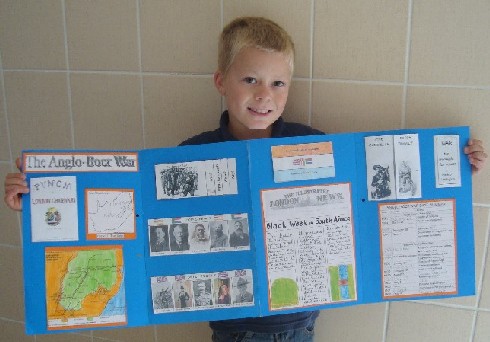
Sample of completed file folder of the Anglo-Boer War
Ten Benefits of Using a File Folder
1. A file folder project will enable your children to work on and review key information about the topic being studied.
2. It will develop auditory and comprehension skills as well as the ability to search, sift and find answers in a written text.
3. The hands-on activities are fun and develop fine motor skills.
4. Children love to learn by doing!
5. The creative possibilities are endless. Children can be creative and add their unique touch to their projects.
6. File folder projects are ideal for multi-level learning.
7. Project packs can be incorporated into unit studies, supplement topics of study or stand alone.
8. A project gives the children a reason for writing and drawing.
9. File folder projects are compact and easy to store.
10. A file folder project can become part of a child’s portfolio of work and are a great tool for reviewing completed work.
BUY NOW
Sample Snippet from the Lapbook
The South African War
Did you know?
The British referred to this war as the Boer war, as from their perspective, the Boers were the enemy. The Boers called it the Vryheidsoorlog (War of Freedom).
It was later called the Anglo-Boer War but since there were not only Brits and Boers involved but also people from other population groups, it is now referred to as the South African War.
In 1867 diamonds were discovered at Kimberley in the area of South Africa known then as Griqualand West. A dispute followed between the Griqua, Tswana and British over who owned the diamond fields and in 1871 the British annexed this area.
Then, in 1872, gold was discovered in the Lydenburg district and a gold rush followed. In 1877 the British annexed the Boer republic in the Transvaal, but in December 1880 the Boers united and declared their country independent.
The First Anglo-Boer War (1880 -1881)
On 20 December they attacked and defeated British troops at Bronkhorstspruit. They also defeated British forces at Laing’s Nek and at Schuinshoogte.
On 27 February 1881 the British troops, under the command of Major-General Sir George Colley, gathered on Majuba Hill (now called Amajuba Mountain) as they planned to drive the Boers from Laing’s Nek below.However, in their red coats, the Boers saw them and were able to take them by surprise.
The British suffered such great losses that they surrendered and on 20 March 1881 a treaty was signed to end the war and the Transvaal was handed back to the Boers. In 1882 Paul Kruger was elected president of the Boer republic.
In 1886, an even richer deposit of gold was discovered on the Witwatersrand and prospectors flooded the area in an even greater gold rush than the earlier one. Most of them were British and by 1890 these ‘uitlanders’ as the foreigners were called, made up about 70% of the white population of the Transvaal.
Paul Kruger refused to give them the right to vote in the Boer republic, fearing that this might lead to Britain once again taking over.
At this time, Cecil Rhodes had made his fortune on the diamond fields and had come to power as the prime minister of the Cape Colony in 1890.
He had a dream of extending the British Empire through Africa from Cape to Cairo, and the Boer republics stood in his way.
Rhodes insisted that the British be extended the right to vote but Kruger refused.
Rhodes then decided that the uitlanders should rebel against Boer rule.
Rhodes then sent 500 mounted men under the leadership of Lieutenant Leander Starr Jameson to invade the Transvaal. The plan was that the uitlanders would rise up in rebellion and overthrow Kruger’s government.
The raid took place on 29 December 1895, but failed as the uitlanders did not rebel as planned. After this, Rhodes was forced to resign from all his public offices and business positions as well.
After the Jameson Raid, there was increasing bitterness between the Boers and the British throughout the Cape Colony and the Boer republics.
The Causes of the Second Anglo-Boer War
The uitlanders continued pressing for their rights and knowing that this would lead to British control of the gold fields and the Boer republic, Kruger continued to refuse.
In September 1899, the British Colonial Secretary, Joseph Chamberlain sent an ultimatum to the Boers, demanding full equality for the uitlanders living in the Transvaal.
President Kruger, seeing no other option than war, issued his own ultimatum, giving the British 48 hours to withdraw all their troops from the border of the Transvaal.
The British ignored his demands and so on 11 October 1899 the Boers declared war. They blew up an armoured train and besieged Mafeking (now called Mafikeng).
The British considered their army far superior to the apparently untrained Boer troops and expected the war to be over before Christmas, but they were unpleasantly surprised. Each Boer brought his own horse and gun to join the Boer Commandos and with their veld skills they became a formidable force against the British.
Overview of the Second Anglo-Boer War
The second Anglo-Boer war had three distinct phases.
1. The sieges: Boer forces besieged British garrisons at Ladysmith, Mafeking and Kimberley in November of 1899. The Boers then won a series of battles at Colenso, Magersfontein and Spionkop against British troops when they tried to relieve the three sieges.
2. The relief: With the arrival of great number of British troops under the command of Lord Roberts, another British offensive was launched. This time the Brits succeeded in relieving the sieges. They then proceeded to invade the the Transvaal and the republic’s capital, Pretoria, was captured in June 1900. When Lord Roberts entered the streets of Pretoria, amid cheers from the crowds, he believed the war was over, but it wasn’t!
3. Guerrilla warfare: From March 1900 the Boers attacked and raided targets such as columns of British troops, telegraph sites, railways and storage depots. Lord Kitchener who was then leading the British, responded by implementing his scorched earth policy whereby Boer farms were destroyed and burnt and the women and children rounded up into concentration camps.
Purchase The South African War
More SA History Lapbooks
Buy more printable lapbook projects to enjoy as you learn about South Africa and the people and events that have played a significant role in the development of our country.
-
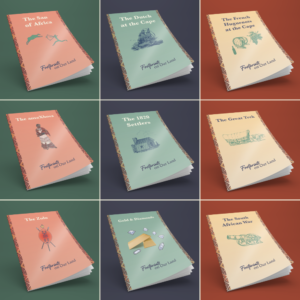 SA History Lapbook Bundle of 9 (Digital)R800.00
SA History Lapbook Bundle of 9 (Digital)R800.00 -
 The 1820 Settlers (Download)R100.00
The 1820 Settlers (Download)R100.00 -
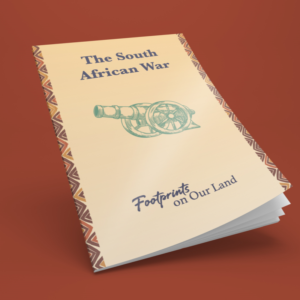 The South African War (Anglo Boer War)R100.00
The South African War (Anglo Boer War)R100.00 -
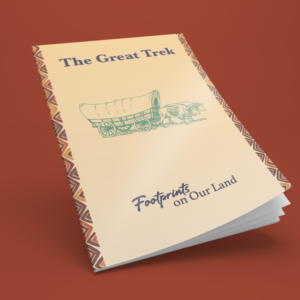 The Great Trek (Download)R100.00
The Great Trek (Download)R100.00 -
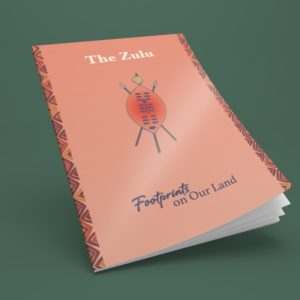 The Zulu (Download)R100.00
The Zulu (Download)R100.00 -
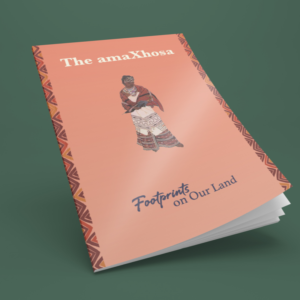 The Xhosa (Download)R100.00
The Xhosa (Download)R100.00 -
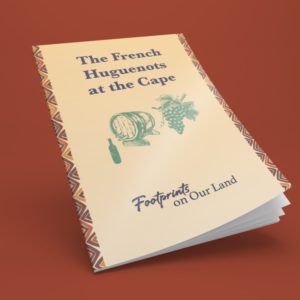 The French Huguenots at the Cape (Download)R100.00
The French Huguenots at the Cape (Download)R100.00 -
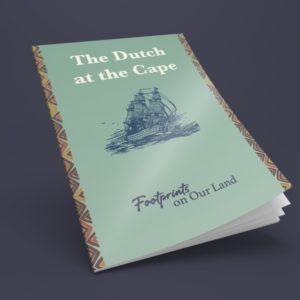 The Dutch at the Cape Lapbook (Download)R100.00
The Dutch at the Cape Lapbook (Download)R100.00 -
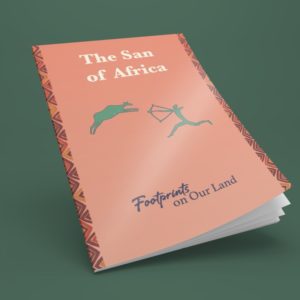 The San of Africa Lapbook (Download)R100.00
The San of Africa Lapbook (Download)R100.00 -
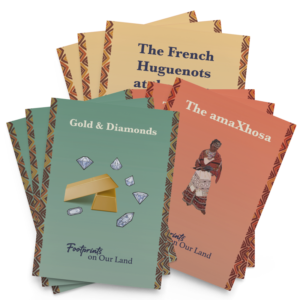 SA History Lapbooks Bundle of 9 on CDR800.00
SA History Lapbooks Bundle of 9 on CDR800.00
